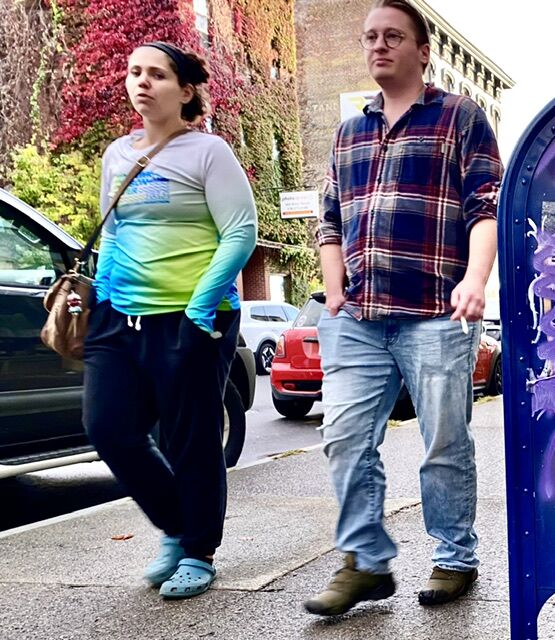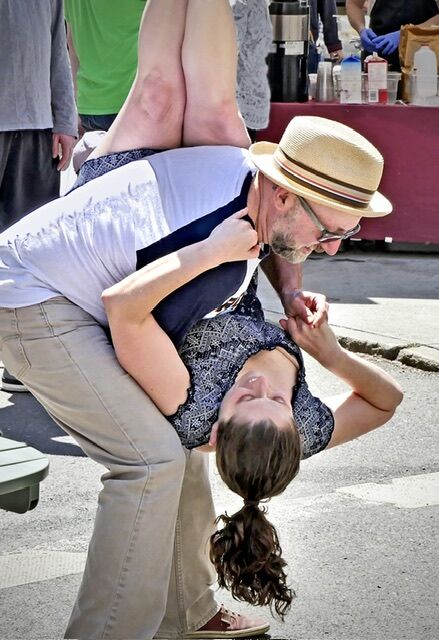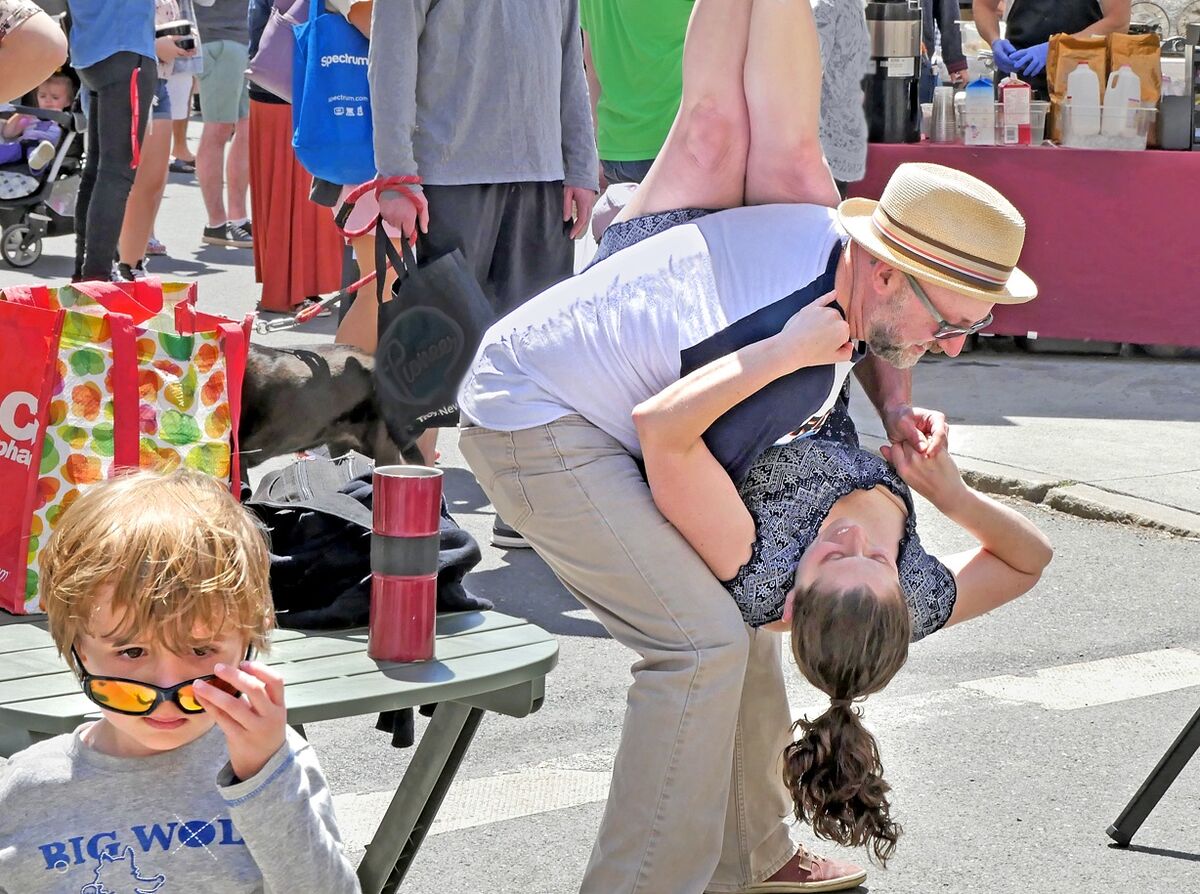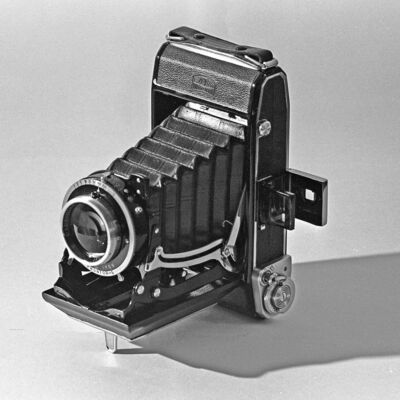How do you approach composition in your photography?
Jan 19, 2024 15:58:36 #
SuperflyTNT wrote:
... Where I think the “rules” have some validity is for newer photographers and those with no art background. Not so much that they look through the viewfinder and think about what rules to be apply, but that they learn to look at a photo and understand what makes it “look right” so that when they’re shooting they learn to look instead of just centering the subject and snapping away.
Cany143 wrote:
One succinct response, one detailed. Together, Superfly's and Cany's postings are absolutely the best advice a novice will ever receive on Ugly Hedgehog regarding composition.For once (or twice, if I include the 'rule' that w... (show quote)
Jan 19, 2024 16:11:22 #
Longshadow wrote:
Cropping in post is handy for scenes within scenes.

Cropping in post is handy for scenes within scenes.
I will never disassemble "scene within scene". The interaction is everything. Emphasising each scene seperately is just spoon feeding the viewer. I dont care about visually illiterate viewers ... which acoarst applies only to my own personal work.
Spoon fed, in your face, predigested cliches are de riguere for commercial work. Thaz how vernacular communication works. If you want that in your personal work, at least youll be quite well received and easily digested, lotsa blue ribbons !
Attached are examples of scene within scene. But I only disassembled them for discussion here. I rather show only fully intact versions.
Jan 19, 2024 16:18:06 #
My advice on composition and many other aspects of photography is "Don't join camps and cults"! Some folks will say that "rules are in the toilet" and others are sticklers for the rules as if they were laws. The problem with these attitudes is that everyone does not SEE the same way, have the same standards or requirements, want the same results as others, or all shoot the same things.
The same disciplines can be applied to every kind of work. If you are shooting still-life setups in a studio you can spend endless hours moving things around, varying camera position, lighting perspective, whatever—a rapidly moving event- not so much. Cover the combat in a war zone- you may need to spray and pray and then run for your life. Sorry for the hyperbole but you all know what I mean.
Some photographers can pre-visualize the scene way before the image hits the sensor. Some others work backward from whatever they are shooting. Some can do both depending on what they are doing.
I find it helpful and stimulating to try differet approaches and not discard concepts or methods that I don't usually do. Sometimes I learn something new and sometimes I find that it woud have been better to pass on some ideas and any negative suspicions I had were confirmed.
If you always strive for effective composition, after a while, you will perfect your style and you will be better equipped to apply your skill in various and even difficult scenarios.
If you never deliberately address composition- that's fine too- I do not pontificate!
The same disciplines can be applied to every kind of work. If you are shooting still-life setups in a studio you can spend endless hours moving things around, varying camera position, lighting perspective, whatever—a rapidly moving event- not so much. Cover the combat in a war zone- you may need to spray and pray and then run for your life. Sorry for the hyperbole but you all know what I mean.
Some photographers can pre-visualize the scene way before the image hits the sensor. Some others work backward from whatever they are shooting. Some can do both depending on what they are doing.
I find it helpful and stimulating to try differet approaches and not discard concepts or methods that I don't usually do. Sometimes I learn something new and sometimes I find that it woud have been better to pass on some ideas and any negative suspicions I had were confirmed.
If you always strive for effective composition, after a while, you will perfect your style and you will be better equipped to apply your skill in various and even difficult scenarios.
If you never deliberately address composition- that's fine too- I do not pontificate!
Jan 19, 2024 17:04:51 #
JZA B1 wrote:
Square crop, rule of thirds, or something completely different?
How do you know which one to apply in any given situation? Any time-tested rules or just what looks best?
How do you know which one to apply in any given situation? Any time-tested rules or just what looks best?
Whatever looks good to me alone.
Jan 19, 2024 17:10:56 #
spaceytracey
Loc: East Glacier Park, MT
MrBob wrote:
If you are a skilled typist do you THINK about where the keys are located... ? Your BRAIN knows; it has learning ability. When it is right, you KNOW and FEEL it... Of course there are ALWAYS scenes within the scenes...
YES! The eye knows.
Jan 19, 2024 18:28:58 #
JZA B1 wrote:
Square crop, rule of thirds, or something completely different?
How do you know which one to apply in any given situation? Any time-tested rules or just what looks best?
How do you know which one to apply in any given situation? Any time-tested rules or just what looks best?
My camera is set so that images cover the full sensor, 6,000 x 4,000 pixels. I've set my finder, both the eyepiece and the screen on the back, so that the 'rule-of-thirds' grid lines are visible. And when needed, I can toggle on a the 'level' feature which helps when you need precise pitch and roll alignment.
As for the actual composure of an image, I'm probably not as careful as I should be, but I do watch for shadows and reflections but when it comes to image coverage, I generally shoot with a lettle extra space that would allow for some cropping during post-production. That is, I don't use the zoom for that. Now, I'll use the zoom if there's really some distant or small feature that I think it's critical that I have as much detail/resolution with respect to the feature as possible. That being said, I often expect to do some cropping, but even then, I try to keep it reasonable as I don't want the throw away any more of the resolution than I have to.
And yes, I shoot both landscape and portrait orientation as needed, although I've been known to crop for the opposite effect when I realize the need for it late in the game, that is, during post-production.
And when the subject matter lends itself, I do use the panoramic option on my camera as I do shoot a lot of landscapes. And that also means that I keep my wide-angle lens handy. My primary camera is an APS-format Sony a6500, and unless I need a truly long telephoto or am doing macro work, for which I have specialty lens, I generally stick to my 18-135mm 'normal' lens and a 10-18mm wide-angle. And for the record, rather than switching to a longer lens (despite always having a 55-210mm in the bottom of my field bag) I generally opt for using Sony's 'Clear Image Zoom' to give me a 2X boost with my 18-135mm lens (one of the 'Custom Buttons' is programmed to enable it).
Anyway, those are my thoughts on the subject, for what they're worth.
Jan 19, 2024 18:48:24 #
JZA B1 wrote:
Square crop, rule of thirds, or something completely different?
How do you know which one to apply in any given situation? Any time-tested rules or just what looks best?
How do you know which one to apply in any given situation? Any time-tested rules or just what looks best?
I do not crop unless it is a HDRI Panorama . For me it is Composition in the view finder at least for the first bracket set as sunsets and sunrises happen fast but not for long . I still do not use the screen on the back except for review to see if I covered the exposure set . It also is about the Sky If it is a great dramatic sky that gives you that Grand wide angle view of a 12×20″ view camera .I compose for that . If it is fore ground image like The dead lakes in the Florida panhandle sharp from fore ground to infinity the horizon is near the top . Always in my mind will it sell at 36 x48 or larger . Is the subject interesting enough for someone to say I need that on My wall . I am mainly shooting a 14-24 2.8 Nikkor on a D850 usually 14-16 mm range . If Birds yes I crop as I am not usually as close as I want to be . Landscape sell more here in Florida . I never have Man made objects in my images under most circumstances . Some large boats in sunsets where the sun is large and appears bigger than the boat . Typical vacation and beach sunsets .
Jan 19, 2024 20:17:56 #
R.G. wrote:
Regardless of whether we're shooting film or digital, we should always shoot as if every shot has the potential to be THE shot (the money shot, the shot of a lifetime). In keeping with that attitude we should give each shot the appropriate amount of effort, consideration and planning.
That's fine for static subjects. With moving subjects you don't have time to carefully consider and plan your composition.
Jan 19, 2024 20:24:12 #
JZA B1 wrote:
Square crop, rule of thirds, or something completely different?
It could be any of the above. The only way you will really get it, is to do it. There is no right answer.
---
Jan 19, 2024 21:27:02 #
M1911
Loc: DFW Metromess
In the 1040s, Edward Weston. wrote an essay entitled "Seeing Photographically," where he stated "Consulting the rules of composition before making a photograph is like consulting the laws of gravitation before going for a walk." he went on to say the rules are applied after the fact.
That being said, the world is not proportioned to any camera format. Therefore I crop as necessary to created the strongest composition that I see. ---AFTER THE FACT.
That being said, the world is not proportioned to any camera format. Therefore I crop as necessary to created the strongest composition that I see. ---AFTER THE FACT.
Jan 19, 2024 21:46:09 #
JohnSwanda wrote:
That's fine for static subjects. With moving subjects you don't have time to carefully consider and plan your composition.


Jan 19, 2024 22:44:52 #
Picture Taker
Loc: Michigan Thumb
I understand that if you set the camera on "P" (for professional) it does it for you.
Especissily with the new "Mirrorless" cameras.
Especissily with the new "Mirrorless" cameras.
Jan 20, 2024 01:25:14 #
JohnSwanda wrote:
That's fine for static subjects. With moving subjects you don't have time to carefully consider and plan your composition.
Right.
But the precaution or solution is quite obvious.
Jan 20, 2024 02:21:37 #
JohnSwanda wrote:
That's fine for static subjects. With moving subjects you don't have time to carefully consider and plan your composition.
With movement you can often anticipate direction and, if you're lucky, timing. Anticipation is a form of planning.
Jan 20, 2024 02:31:43 #
Further to earlier comments about shooting slightly wide, levelling can involve losing a bit off the sides - which could be disastrous if you've composed tightly without any wiggle room. I try to resist any inclination I might have to zoom in tight. If required, a slight trim in PP has negligible effect on pixel density.
If you want to reply, then register here. Registration is free and your account is created instantly, so you can post right away.













